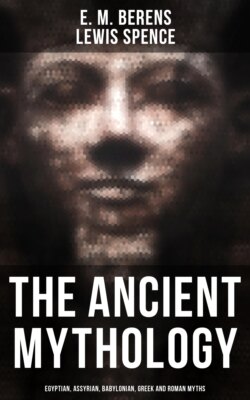Читать книгу The Ancient Mythology: Egyptian, Assyrian, Babylonian, Greek and Roman Myths - Lewis Spence - Страница 52
На сайте Литреса книга снята с продажи.
Nergal
ОглавлениеNergal was the patron god of Cuthah, eastward from Babylon. He was a god of extremely ancient origin, and indeed the first inscription which alludes to him is dated about 2700 B.C. He is mentioned in the Old Testament (2 Kings xvii 30) as an idol whom the Babylonians who re-peopled Israel brought with them. He seems to have had a close connexion with the nether world, indeed he is practically the head of its pantheon. He appears to have been a god of gloom and death, and his name may signify 'the lord of the great dwelling place,' that is, the grave. His city, Cuthah, may possibly have been renowned as a burial-place. We find him associated with pestilence and famine, but he has also a solar significance. He is indeed the sun in its malevolent form, fierce and destroying, for in myth the sun can be evil as well as good. We thus find the solar power depicted as a fierce warrior slaying his thousands and tens of thousands. Again it is quite possible for a solar deity to have an underworld connexion, seeing that the sun is supposed to travel through that gloomy region during the night. We thus see how Nergal could combine so many seemingly conflicting attributes. As god of the dead he has a host of demons at his command, and it may be these who do his behests in spreading pestilence and war. Where he goes violent death follows in his wake. At times he is called the 'god of fire,' the 'raging king,' 'he who burns,' and the 'violent one,' and he is identified with the fierceness of flame. In this respect he is not at all unlike the Scandinavian Loki who typifies the malevolence of fire.
